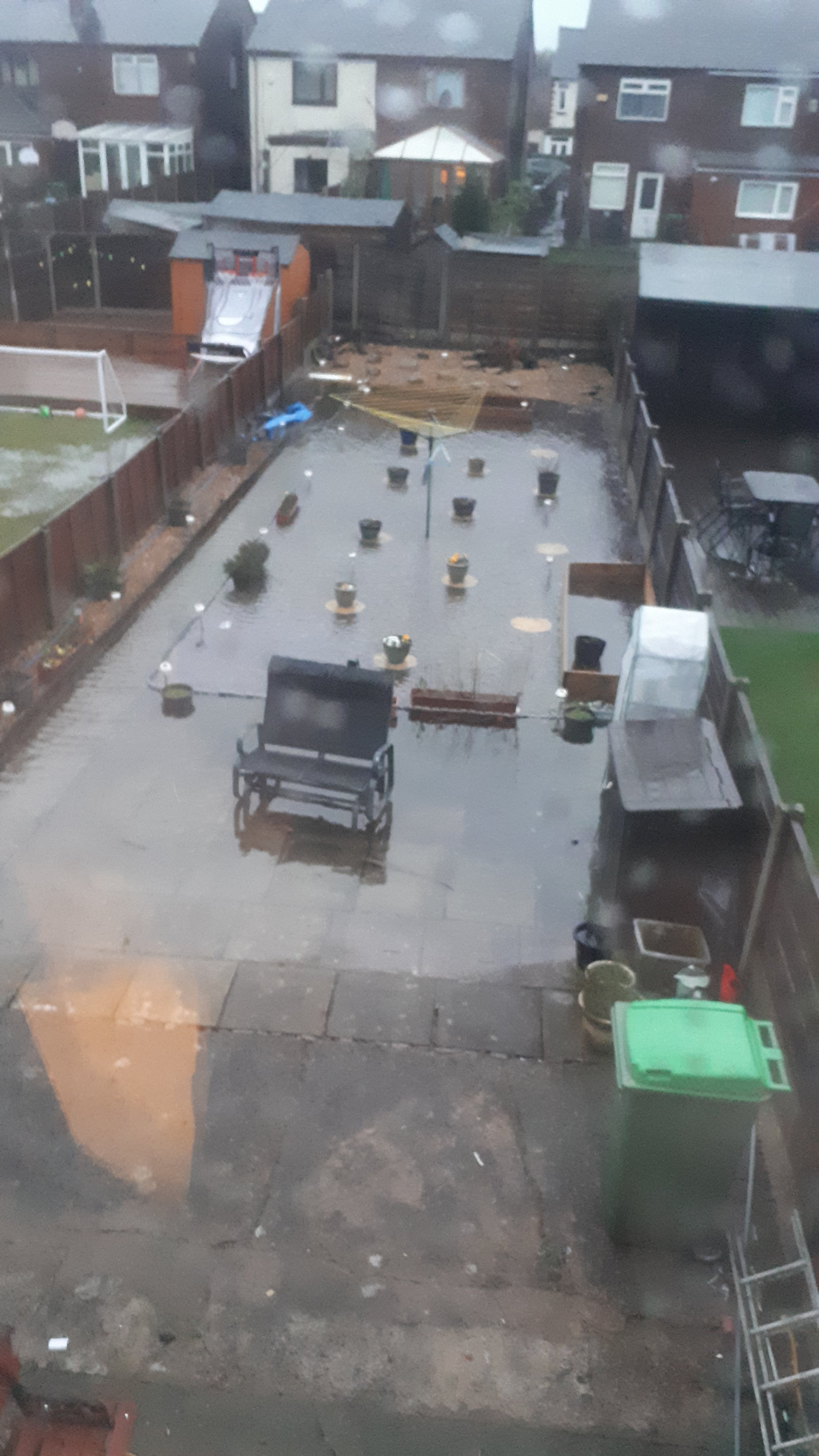This Forum will close on Wednesday 27 March, 2024. Please refer to the announcement on the Discussions page for further detail.
I'll let the photo do the talking...

Need I say more...?
Seriously, though - does anyone have any ideas as to a practical drainage solution that can carry surface water out of my garden so I don't wake up to this again? Any companies or people who can figure out how to install drainage that can carry water up a slope and away, since the garden slopes away from the house, both neighbours have gardens built up above ours and are likely sending water our way.
0
Posts
I'm no expert but I would think the water will always find the lowest point, so that's where you would need to install drains. Maybe something that could channel water to where your guttering drains to?
Neighbours to to the left look like the pitch will be unplayable this weekend 🥅 ⚽️
Gardening in Central Norfolk on improved gritty moraine over chalk ... free-draining.
@Dovefromabove, I didn't know that! Not sure what's the difference between rain that falls on the roof and rain that falls on the ground, particularly if it's hard landscaping.
Houses round here that have gardens sloping down towards the house have a line of grating set in the ground at the lowest point for the rainwater to drain away, but I don't know where it goes to.
If you go for a tank the water can be stored and re used/ pumped back in the summer for watering, if you go for a drainage sump then a deep excavation lots of rubble or stone gabion's both expensive
If it's a not to regular and you have a drain close you could dig a smaller sump and use a submersible pump to pump the water to the drain cheaper option.
As for legal it is just watch any flooding on TV the water is pumped out and into the main drainage system it is however now against building regulations to install guttering into a main drain.
"You don't stop gardening because you get old, you get old because you stop gardening." - The Hampshire Hog
Road drains are surface water drains which may or may not connect to the sewers - in the OPs case it sounds as though the surface water doesn't go into the sewers.
Your options are; a bigger soakaway, using rain crates or the like (i.e. digging a big hole); applying to the local water authority for a permanent discharge into the local surface water drain (i.e. formalising your current temporary arrangement using a sump, a pump and some buried pipework); raising the level of your garden above your neighbours' (i.e. starting a war).
“It's still magic even if you know how it's done.”